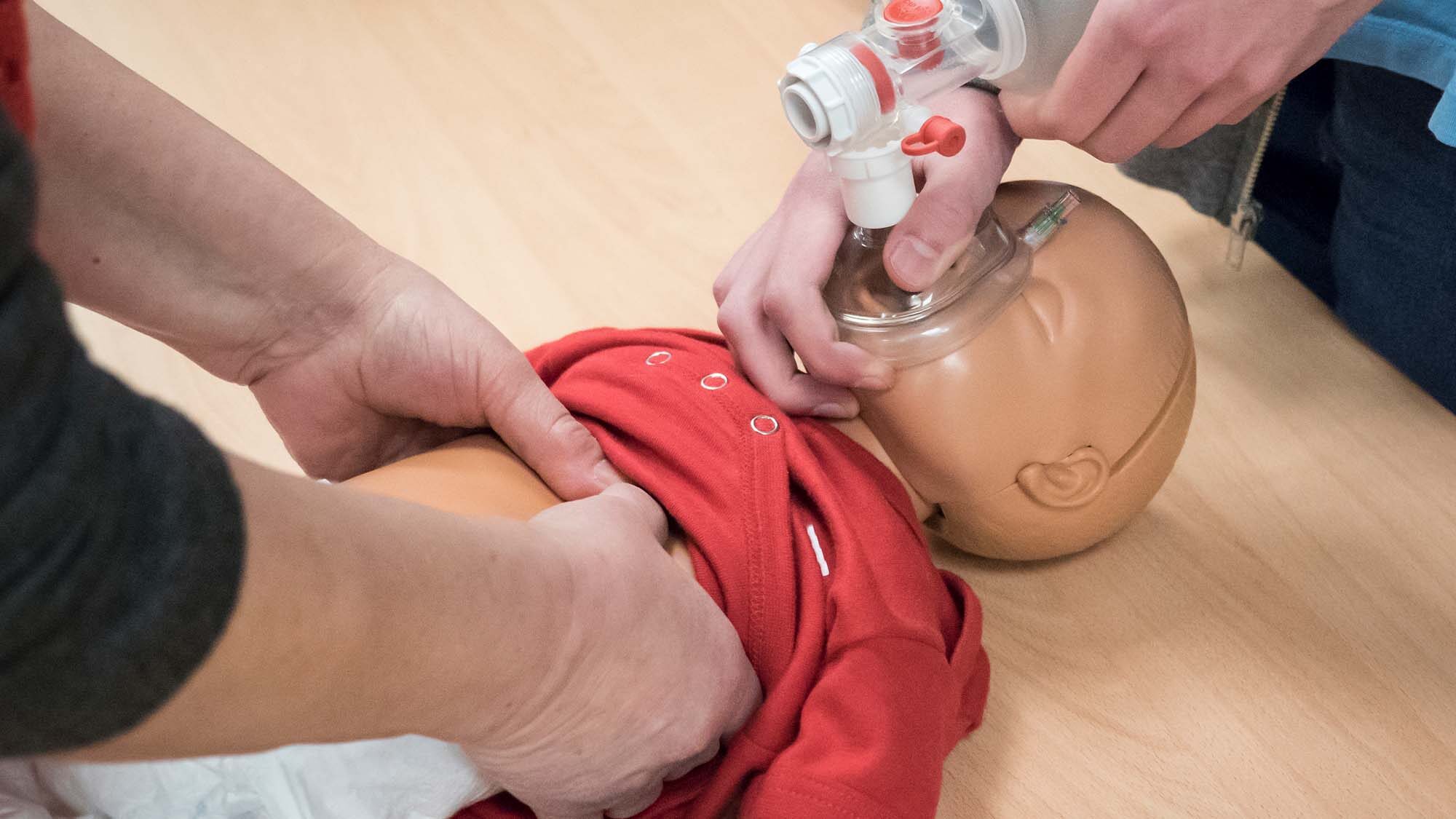Essay by: ISP076
An Automated External Defibrillator, abbreviated AED, is defined as a “Device used by basic cardiopulmonary resuscitation (CPR) providers to treat fast, irregular dysrhythmias with electrical shock to the heart using automated rhythm analysis and simplified functions” (Perry, Potter, & Ostendorf, 2010). As is clear in the definition, an AED is a very useful and vital piece of equipment that should be available to use in public places.
Logan Powell, an average first grader in Spanish Forks, Utah, collapsed on the playground at recess. Immediately, the staff at his elementary school responded with CPR. Following CPR, a Lieutenant with the local police department brought an automated external defibrillator to assist while waiting for the paramedics. The AED was able to bring Logan’s heart rhythm back to normal. Logan had a heart defect, unbeknown to his parents and the school staff. Unfortunately, those few precious moments spent without the AED resulted in traumatic brain trauma from lack of oxygen and two new diagnoses of Sensory Integration Disorder and ADHD for Logan (Penrod, 2012). However, had the Lieutenant not arrived with the AED, the outcome may have not been as fortunate. It is examples like these that make it apparent that AED’s are effective life-saving devices and should be easily accessible wherever people are present.
CPR (cardiopulmonary rescusitation) is a valid method for resuscitation when attempting to save a life, but to know how to properly perform CPR without causing more damage, one must be trained. AEDs come with instructions and most have verbal commands that instruct the user on placement of pads and steps for usage. These aspects of AEDs make the training requirement for using them very minimal AED (Automated External Defibrillator) FAQ). Placing AEDs in public places like parks and bus stops is an invaluable safety measure.
Dave Gneiting is the risk manager in the school district in which Logan is enrolled. Included in the article about Logan, Dave stated “You don’t know anything about those students until something happens” (Penrod, 2012). This statement is true for not only students, but the general public as well. Sitting next to you on the city bus could be a man waiting to have a triple bypass surgery the next week, or passing by you on the street could be a woman suffering from a respiratory disorder threatening her life. People like this may appear healthy but could be like Logan, suffering from an undiagnosed and/or unapparent disorder. When dealing with the uncertain, it is always best to be prepared for the worst.
There are different forms of cardiac arrhythmias, some being more life threatening than others. Dangerous cardiac arrhythmias like ventricular fibrillation or ventricular tachycardia are two types that have been known to cause SCA (sudden cardiac arrest). In order to save the person suffering from either of these types of arrhythmias, immediate assistance is required. How quickly the person receives resuscitation directly corresponds with likelihood of survival. The use of an AED reduces the wait time for defibrillation, therefore increasing possibility of survival (England, Weinburg, & Estes, 2006). “Early defibrillation has emerged as the most important intervention with survival decreasing by 10% with each minute of delay in defibrillation” (England, Weinburg, & Estes, 2006). Five minutes waiting for paramedics or a specially trained individual to intervene is all it takes for the survival rate of the patient to decrease by half. With that in mind, I reitterate, AEDs in public places is a valuable idea that should be implemented.
References
AED (Automated External Defibrillator) FAQ. (n.d.). Retrieved from Zoll: http://www.zoll.com/medical-products/automated-external-defibrillators/faq/
England, H., Weinburg, P. S., & Estes, M. (2006, February 8). The automated external defibrillator clinical benefits and legal liability. Retrieved from American Medical Association: http://www.suddencardiacarrest.org/aws/SCAA/asset_manager/get_file/40245?ver=978
Penrod, S. (2012, April 8). AED saves boy’s life, district puts one in every school. Retrieved from KSL.com: http://www.ksl.com/?sid=19912256
Perry, A. G., Potter, P. A., & Ostendorf, W. R. (2010). Clinical nursing skills & techniques (8th ed.). St. Louis, MO: Mosby Elsevier.









